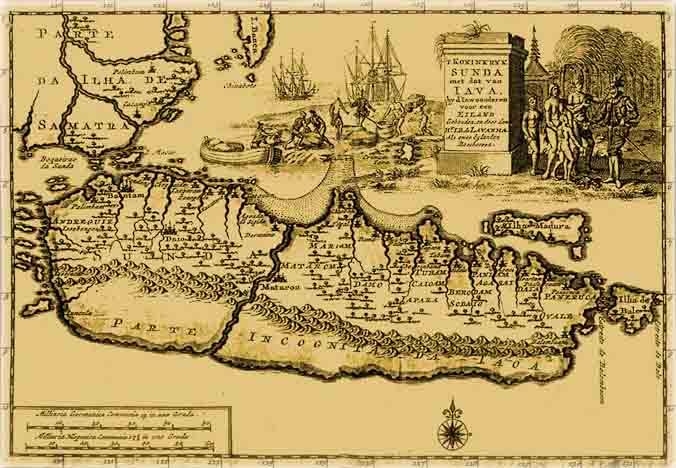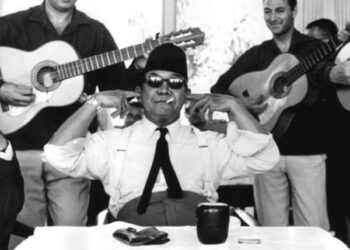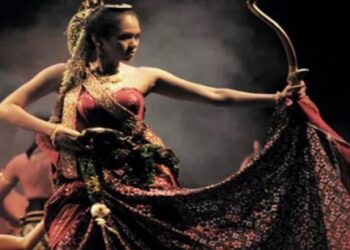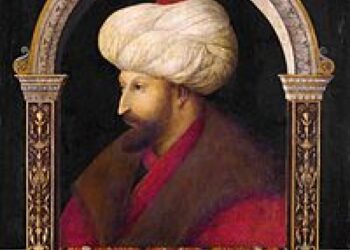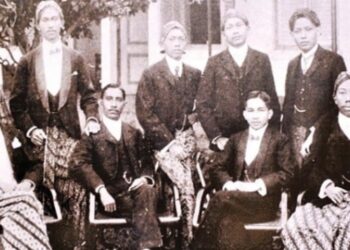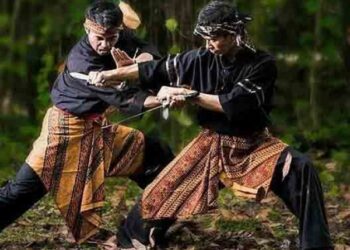Java Island at 1804-1806
BOOK 4
CHAPTER 1
Batavia is located on the north coast of Java, in an ancient kingdom named Jakarta at latitude 60 10 ‘and longitude 1220 47’, divided by a large river that empties into the sea three quarters of a mile from the city. It is one of the largest and richest cities in Asia, all roads are lined with canals that can be sailed by medium sized boats. The city is the capital of the Dutch East Indies and is the seat of the head of a council consisting of twelve members, including the governor general who is its leader. Board meetings are usually held on Tuesdays and Fridays from seven in the morning until noon. The council’s authority is absolute, it makes and annulls laws, has an army, appoints a king, declares war, breaks peace treaties and alliances with all princes of the east and places residents in their territories. A fiscal officer who heads police affairs from crime, he has great authority and organizes grudges and arbitrary punishment. The marine fiscal officer, oversees anything related to sea shipping routes, rivers and canals that can be navigated. The trade in Batavia was quite large, but in short it was only a form of barter, because the export of cash was indeed prohibited, there was no captain of a merchant ship. It was rare for these captains to get barter with the same total as what they had given, the Company almost always urged them to take a quarter or a third part in the form of spices.
Because the city functions as a depot for all spices from Maluku and pure produce from Java consisting of rice, coffee, sugar, wine and pepper, ships from all over the Indian, American, African and European islands even arrive. The Dutch were the only Europeans to maintain relations with Japan, so every year, in July, the governor general sent a 1200-1500 ton ship filled with a load of cashmere cloth, fine quality fabrics, watches and spices. spices, all of this will be bartered with copper goods which will be made of very poorly shaped coins which are used as payment money for Indians and Europeans as well as for people employed in arithmetic houses in Java and Maluku.
These voyages were very profitable for the captains of ships sent to sail. His cargo always contained a gift for emperors from a large area and vice versa, the emperor would send a gift to the governor general of the Dutch East Indies. The style of dealing with the Japanese was entirely personal, since Jesuit missionaries were driven out of the region for trying to spread their doctrine.
All roads in the city are closed with iron doors at night, each Japanese responsible for his neighbors, so they will not let bad things happen to each other. People are very strict about maintaining law, customs, and civil and domestic behavior. The Dutch, in their embassy, have been and are still required to submit to degrading conditions in order to be able to maintain their relations with the Japanese.
CHAPTER II
Batavia’s defense line, which was a depot for all Dutch wealth in the Indies, extended from the mouth of the Ancol river to the mouth of the Angke river. In addition to the city walls, consisting of well-built bastions, surrounded by very deep and wide moats, there was also a fortress with four bastions also made of stone. Ancol small fortress is very old, built of bricks, its walls are rarely that have a thickness of more than four inches and it can, at best only as a means of defense against the natives. At the Angke estuary, the natives are referred to as the crocodile river, because there are indeed many crocodiles, the bottom is mud and sand, as well as the edges that have accumulated in the estuary for four or five years.
The enemy that attacked Batavia, at worst, could only do it from the beach and maybe later by means of his small boat would risk being hit by cannon fire from existing camps, partially burned, as happened in the British squadron when he blocked the shipping route Batavia but even though , for example, he was able to master Batavia, regardless of his natural or artificial defenses. Semarang receives results from all the north and east coast areas and from the interior and from this depot, the Batavia region gets its supply.
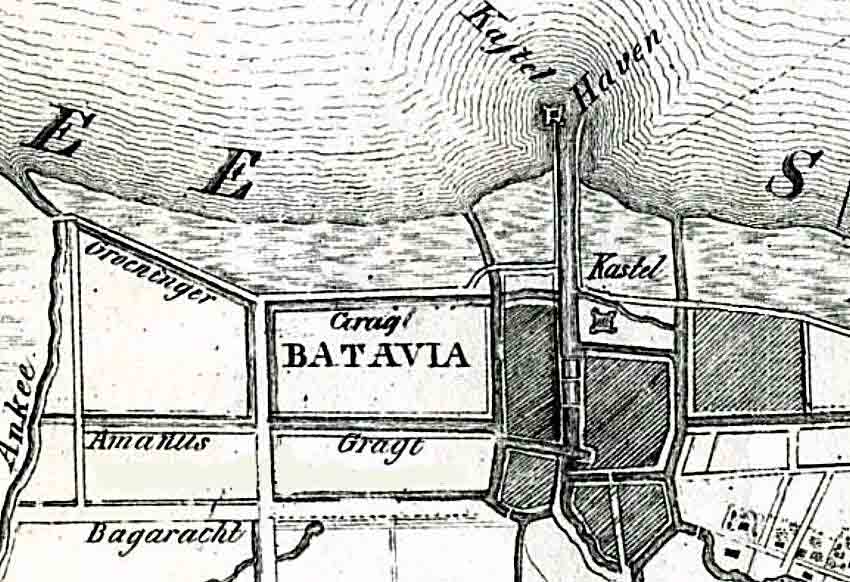
Midday is the general lunch hour and one o’clock is the time to take a nap. After a nap the Dutch will board their train and take a walk around the ancient Jakarta royal area. The roads by this train were very pleasant indeed, along the road that connected them was decorated by the great palaces of the Indian chancellors, the main men of the Company and the richest merchants.
The cause of the environmental unhealthiness of Batavia was the deposition of large amounts of mud that had accumulated in the estuary and along the Jakarta river. The healthiest and most powerful person will temporarily, be struck by an illness and die within a few hours, because so quickly the rot spreads in parts of the body. The only method to make Batavia healthier is to dredge silt in the mouths of the Ancol river, Jakarta and Angke and to go through all the canals so that the water can flow smoothly and can carry all the dirt that always fills it. The swamps must also be drained and turned into agricultural land. Only a few of the Batavia region produced corn, cassava and rice. In Batavia saffron and all kinds of spices are used in all kinds of dishes that they eat, especially in rice which is a staple food as an important tonic in hot climates, where the stomach is easily troubled.
On April 4, according to the annual tradition of the rising sun, there are no number of Chinese people, all sexes and ages, some of them on foot or on a carriage on a pilgrimage to Jakarta near the site of the ancient royal capital, to the tombs of their ancestors. Unloading stages were erected on one side of the burial ground, temples on the plains. The interior of the temples is filled with tables, where they eat confectionery and durable fruit, drink tea and smoke. Even so this is only permitted for bonze or the rich, because the others are outside and don’t dare to approach. There are many bonze in the prayer room. After the ceremony began, paar bonze, numbering fifteen, left the prayer room with loud, shrill music that was bland to European ears. During these ceremonies and events, the gates of each temple and both sides of the stage were filled with Chinese people, especially children who played various games, the greatest passion of these people.
The Chinese populated so much Batavia and it was easily turbulent that the Dutch authorities were always careful in providing entertainment. The roar of gomgom music (gamelan) which is equivalent to the sound of a collision of four or liam large kettle, has never been during this show. Around the stage and along the main street of the Chinese village, in its midst there were built many games and eating houses, all belonging to the Chinese. One of their favorite menus is the dog they eat with all kinds of sauce. Apart from the entertainment stage, on the streets of the village are processions of men with painted or masked faces, carrying kettle drums, gamelan and tambourines, many of whom dress up as demons who will be brought triumphantly over poles and others in baskets which is decorated with ribbons, paper, bells, etc. The reason they throw a party against this demon is that the Lord of heaven and earth is all good, so there is no need to ask him and vice versa, the devil must be celebrated and pleased.
Batavia gave many examples of Chinese people who, due to living conditions, could not continue their business, had handed over their daughters to Europeans as collateral for a number of venture capital loans. Needless to say at length about the business and trade genius of the Chinyang, his skills in this field are well known. They are difficult to adapt to military science but even though cowardly and like women they are very easy to rebel. In the Javanese villages there was always a Chinese leader called the captain, in the city two of his deputies were a lieutenant. The Chinese paid a huge annual tax on their business and trade and collected it to the Company.
The ponytail they leave very long, sometimes up to their knees, is paid according to the length that is set and measured every year at a certain time. They have a dangerous custom of storing corpses in the house for seven full days, although due to the hot climate, they will rot in a few hours, a habit that is not only dangerous for the family directly but for the neighbors, houses of Chinese who mourn , where death occurred, marked by a piece of white cloth hanging on the door.
CHAPTER IV
The bamboo barracks where the soldiers had lived previously were located close to the city in a low and unhealthy area and the Batavian district after in 1799 accepted the 12th battalion as an additional Troop, building a new camp on a forested land, one and a half league of music, rising inland in a dry, swampy, open area.
Tanah abang is a large Malay village, although there are also a number of Chinese families, a large market is held here every day, throughout the year. A Malay prince had for years been detained in a small room behind the guardhouse, he was the eldest son of the last king of Banten. The prince is not shoes and does not wear clothes that are different from most Malay people, the food is only rice.
On the way to Batavia, through the Sunda Strait there are several small islands, including the Big Cambusa which is not large enough to be inhabited but always has a small group of guards from the artillery unit with a cannon as a signal to ships entering the strait. About five leagues east of Batavia there was a large Malay village called Tijelenking, the village was divided by a river, fused with the Ancol river and empties into a kind of small bay filled with water no more than six or eight inches high. At the end of the bazaar is a beautiful house owned by a European merchant. Along the coast and near the point that forms the fake bay are ten feet deep with sandy seabed. Not far from the village, on the right side of the river, on the bridge, there were two roads that crossed the country to the interior, behind Batavia.
Java Island has all kinds of snakes. The most dangerous ones whose bite is deadly are the smallest. They were mostly in the Welte Freden plain and around the engineer camp.
CHAPTER V
On the night of 18 or 19 March 1804, the king of Banten was found murdered in his bed by one of his nephews’ grandchildren, a young prince, son of a prince who was detained in the fortress of Mester-Cornelis. This event is said to be the result of a conspiracy against the king who was deemed to have no rights, because only the brother of the last king had died as stated. In accordance with the common law of retaliation among the Indies here, the killer would be sentenced to death in the same way as when he had carried out the murder and the higher authorities held a special session to elect a successor to the dead king.
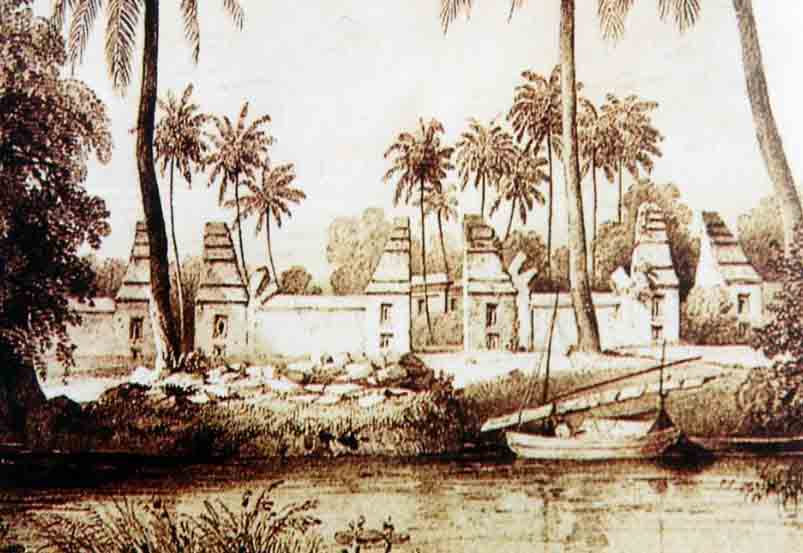
The kingdom produced abundant rice and pepper with a small amount of tin and calin. The land of Lampung on the island of Sumatra, although greater than Banten is its subordinate. The Batavian government had long thought of establishing a factory on the island of Sumatra that was separated from Java only by the Sunda Strait and which would provide additional very profitable trade branches. It is very clear if the Dutch get a position in Lampung with a fortress consisting of three or four hundred Europeans, Madurese and a resident they will easily get in touch with the Sultan of Palembang by forming an alliance with the kings. May 30 was the anniversary of Jakarta’s conquest and the founding of Batavia.
Palankang is a village one and a half league inland, on the right side of the Blambangan bay mouth. Landing into the Blambangan bay is difficult and the coast is dangerous especially in the muddy north of the river. Banyuwangi is the only Dutch post on the east side of the island of Java, located five leagues from the Belambangan bay, in the Bali strait and seven from the coast, a small river, also called Belambangan, flows through it. The Balinese who cross the strait to Banyuwangi, cannot be accepted before they can show a passport, which is written on a leaf of badamier (palm leaf).
Belambangan Bay, the entrance that starts at the tip of the Fish-Mountain in the Bali Strait, as a whole is a desert full of bushes to its shores, where, at every step, traces of wild animals that haunt the area in large numbers.
Iro-Gounon (Wiroguno), Tumenggung Belambangan, ordered one hundred Malays to start a caravan, into the interior of Java, twenty-five as personal bodyguards and twenty-five to carry goods. On February 26, 1805 the group left Banyuwangi for the small village of Ketapang, two leagues away, on the coast of the Bali Strait. Walking along the beach for about an hour, the caravan stopped at a spring that flowed from the rocks, where everyone refreshed themselves. The road from Ketapang to the Bagnou-Matie post, is only a road known by local residents, even many of its tracks have disappeared in some forests.
Panarukan is located in the Madura Strait, near the Cape Sandanna, on a river whose estuary has many branches, each of which cannot be navigated even with a canoe except during major flooding. Besuki is a large village, about three leagues from the coast. Besuki is a fairly large village divided in various places by a small river. This environment is very abundant with rice, too many game animals, because of the abundance of bushes and grass.
The Pasuruan region is one of the regions in Java which has a large population of these animals. Pasuruan is the capital of a vast area, it is divided by a wide river, which can be navigated several leagues upstream.
The facilities for getting women all over Java are rather odd. Not long after a man was in his bed, a Malay came to offer him and this was even greater, because of his character who tends to be ferocious. Sex workers are slaves and their men are jealous. It is also true that women of this type called rouguin are free women or part of poor families who give it to the prince at his request and give it in the hope of getting blessings from him.
From Surabaya to Gresik by sea, a distance of three leagues is done for five hours, against the wind and waves. Gresik, the capital of the ancient kingdom, is now just a small city divided between indigenous people and China. The government of this country consists of a resident and several Malay troops led by a native.
CHAPTER IX
Sidoarjo is a small village that is very strategic from the mouth of the Madura Strait canal across the end of Panka. In Ujung Panka there are always Javanese and European captains who, as soon as they see ships preparing to sail the canals, will meet them to guide them to Gresik or Surabaya. After crossing this strait and beyond Ujung Panka, we see Rembang, a small settlement on the northern coast, in a relieved niche, then approaching and passing Ujung Jepara past Juwana, another Dutch settlement where the ship rests rather freely, this settlement and Jepara because connected by tebuka lane and the beach is not free from danger for those who do not know him well enough.
Semarang is only about sixty miles from the residence of the emperor of Semarang and one hundred and five miles from Yogayakarta. The Semarang Line is a free route, interesting ships and five fathoms cannot dock one and a half leagues from the coast. One mile south of Kali Besar is Caligawe (Kaligawe), both can be navigated by small boats until deep enough upstream and Kaligawe is always full, because it flows through the large villages of Torabaya and the villages of Java and China, where all trade takes place. Both flow from the imperial mountains of Mataram.
The authority of the Javanese governor who lived there was between Cirebon exclusively to the easternmost part of the Bali strait island. This settlement was very important for the Dutch. All relations between the two empires of Mataram and Yogyakarta and also with other kingdoms and regions depended on it.
The Solo emperor would give the governor’s support of ten thousand people, if there was an attack but it would take a lot of time to gather this number of Malays who were scattered throughout the country and in their families to form it into an army and organize them. A fortress had been ordered to be built on a road connecting the Solo empire and the Sultan of Yogyakarta from the fear of a dispute between the two princes who naturally hated each other and might be so tapered to observe which side seemed hostile to the Company of the two.
The Javanese government was the richest, as the largest office in the Indies, second only to the governor general’s office. Tegal was a small settlement, where a resident who was tasked with strengthening the Company’s agreements with the princes by receiving and storing in the Company’s warehouses, the produce of the country. The erratic position of all the outside offices of the main buildings in Cirebon and of all of them some of which are in the middle of a vast garden full of trees, ponds and small rivers, making the view so pleasant from the various panoramas available .
Cirebon is a small city or it can be said that a large village, the capital of a kingdom of the same name, is divided between two princes of the same family, each of whom has the title of sultan and lives there. The air in Cirebon is generally healthy, although leprosy is a disease that is often encountered as well as eye disorders that are sometimes dangerous in April to December. In this city the Company’s dependents were only residents, secretaries, bookkeepers and three subalterns, all of whom were Europeans, the rest were natives, two thirds of the population in China who had a fairly large village and worked in the fields of retail and agriculture. This settlement could produce sixty piasters per year, this area was independent from the Javanese government and the resident was directly related to high residency.
BIBLIOGRAPHY
Stockdale, John Joseph. 2011. Javanese exoticism. The Variety of Life and Culture of the Javanese Community. Yogyakarta: Progressive Books.






